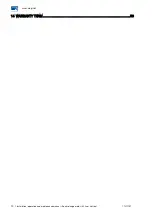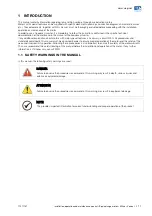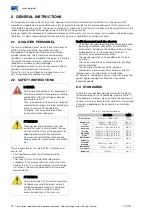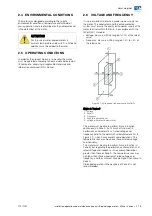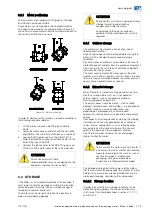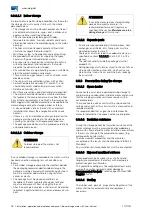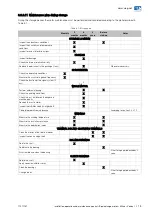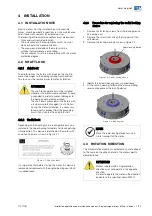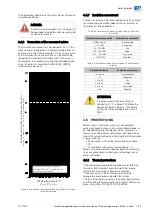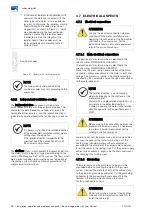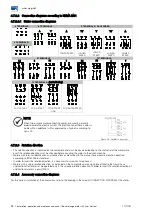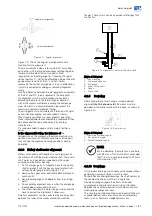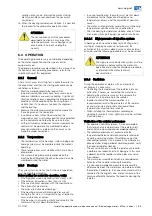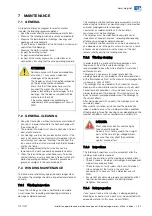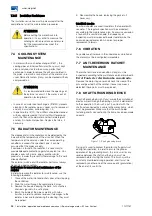
24 l
Installation, operation and maintenance manual – Squirrel cage motor – M line – Vertical 11371757
4.5.1.1
Temperature limits for the windings
The temperature of the hottest spot of the winding must
be kept below the limit of the insulation thermal class. The
total temperature is obtained by the sum of the ambient
temperature and the temperature rise (T), plus the
difference between the average temperature of the
winding and the hottest spot of the winding.
The ambient temperature must not exceed 40 °C, in
accordance with NBR IEC60034-1 standard. Above this
temperature, the working conditions are considered
special and the motor specific documentation must be
consulted.
Table 4.4 shows the numerical values and the
composition of the acceptable temperature at the hottest
spot on the winding.
Table 4.4: Insulation class
Insulation class
B
F
H
Ambient temperature
°C 40
40
40
T = temperature rise (temperature
measurement method by resistance
variation)
°C 80 105
125
Difference between the hottest spot
and the average temperature
°C 10
10
15
Total: temperature of the hottest point °C 130 155
180
ATTENTION
If the motor operates with winding
temperatures above the limits of the
insulation thermal class, the lifespan of the
insulation, and hence that of the motor, will
be significantly reduced, or it may even result
in the motor burnout.
4.5.1.2
Alarm and trip temperatures
The motor alarm and trip temperatures must be set at the
lowest possible value. These temperatures can be
determined based on the factory tests or through the
motor operating temperature. The alarm temperature can
be set 10 ºC above the machine operating temperature at
full load, always considering the highest ambient
temperature on site. The adjusted trip temperatures must
not exceed the maximum admissible temperatures for the
stator winding insulation class and for the bearings
(considering the lubrication type and system), according
to Table 4.5.
Table 4.5: Maximum temperature settings
Temperature rise
(∆t)
Maximum temperature
(ºC)
Alarm
Trip
Winding - class F
Class B
120
130
Class F
130
155
Winding - class H
Class H
155
180
Bearings
-
110
120
ATTENTION
The alarm and trip values may be determined
as a result of experience, but they must not
exceed the values indicated in Table 4.5.
ATTENTION
The motor protection devices are listed in the
WEG drawing – Connection diagram.
Not using these devices is the sole
responsibility of the user and, in case of
damage to the motor, it will void the
warranty.

